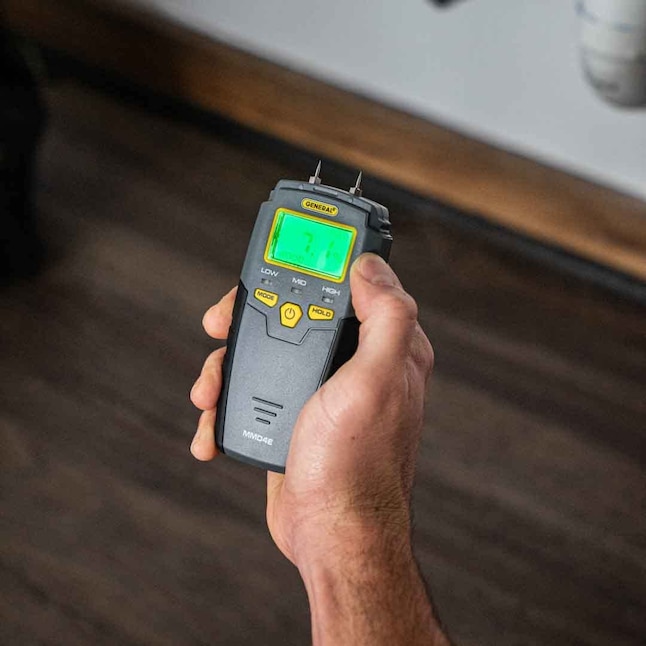Why Every Home Owner Requirements a Moisture Meter: Key Benefits and Functions
Why Every Home Owner Requirements a Moisture Meter: Key Benefits and Functions
Blog Article
Look Into the Globe of Moisture Meters: Whatever You Need to Know
In the world of wetness meters exists a globe of accuracy and practicality that typically goes unnoticed. Comprehending just how moisture meters operate, the various kinds readily available, and their varied uses can lose light on their significance in making certain quality and effectiveness.
How Moisture Meters Work
Moisture meters operate by gauging the electrical conductivity or capacitance of products to establish the moisture material existing. These meters are invaluable tools throughout numerous sectors, including woodworking, agriculture, and building. By using various techniques such as pinless or pin-type technology, moisture meters offer precise readings that assist experts make notified choices.
Pin-type dampness meters function by placing the sharp pins right into the material being checked. On the various other hand, pinless moisture meters utilize electro-magnetic signals to scan a bigger location without creating any kind of damage to the product's surface.
Despite the technique used, dampness meters play a crucial role in avoiding issues such as mold and mildew development, structural damages, or product issues brought on by excess wetness. Understanding just how these meters job is vital for guaranteeing the top quality and stability of materials in numerous applications.
Kinds of Moisture Meters
Given the critical role dampness meters play in various sectors, it is important to understand the various types available to experts for accurately analyzing moisture degrees - Moisture Meter. There are mainly two main kinds of moisture meters: pin-type and pinless dampness meters

On the various other hand, pinless wetness meters use electro-magnetic sensor plates to check a larger location of the product without triggering any kind of damage. This kind is suitable for rapidly scanning huge areas and is frequently used for flooring, wall surfaces, and ceilings. Pinless meters are convenient for taking analyses on completed surfaces without leaving any type of visible marks.
Both kinds of moisture meters have their benefits and are picked based on the certain requirements of the task handy. Understanding the differences in between these types is critical for professionals to make precise dampness analyses.
Applications Throughout Industries
Building specialists depend on dampness meters to evaluate the dampness levels in structure materials like drywall, timber, and concrete, which is critical for maintaining architectural integrity and stopping concerns like rot or mold. The floor covering sector utilizes wetness meters to gauge the moisture web content in subfloors before setting up numerous floor coverings, stopping pricey damages due to excess moisture. In the food market, dampness meters are utilized to monitor and manage moisture degrees in products such as grains, nuts, and dried out fruits to preserve quality and top quality.
Tips for Making Use Of Wetness Meters
Make use of the moisture meter's calibration settings to make sure exact readings when measuring the wetness material in numerous products. Calibration is essential for the appropriate performance of a dampness meter. Prior to each usage, it is advisable to check and adjust the calibration settings according to the particular material being evaluated. Furthermore, ensure the meter is established to the right dampness array for the product you are determining to acquire one of the most exact results.
When using a pin-type dampness meter, put the pins to the proper depth recommended for the product being checked. This ensures that the dampness analyses are drawn from the appropriate deepness within the product, offering a more exact depiction of its moisture web content. For pinless wetness meters, bear in mind to preserve proper call with the product's surface to obtain trusted readings.
Frequently check and replace the batteries in your dampness meter to avoid imprecise readings as a result of low power. When not in usage to prolong its life expectancy and keep its accuracy, Shop the meter in a secure and dry place. By following these ideas, you can optimize the efficiency of your moisture meter and acquire specific moisture material dimensions throughout different materials.
Maintenance and Calibration
To make certain the precision of dampness content measurements, routine upkeep and calibration of the dampness meter are important actions in its correct performance. Maintenance involves keeping the wetness meter clean and totally free from particles that could affect its readings. It is necessary click for more info to comply more info here with the supplier's standards for cleansing to avoid damages to the tool. In addition, normal calibration is necessary to verify the accuracy of the readings. Calibration adjusts the moisture meter to guarantee that it offers constant and trustworthy outcomes.
Calibration should be carried out occasionally, specifically if the dampness meter is utilized frequently or in crucial applications where precise dimensions are called for. Many wetness meters come with calibration devices or can be adjusted by expert services. Moisture Meter. It is advised to keep a log of calibration dates and results to track the efficiency of the wetness meter over time. By keeping and adjusting the moisture meter frequently, users can rely on the accuracy of the dampness material measurements acquired.
Conclusion

Finally, dampness meters play an essential function in different sectors by accurately measuring the moisture material of products. Recognizing just how these devices work, the different kinds readily available, and correct maintenance and calibration are important for acquiring trustworthy results. Whether in building and construction, production, or agriculture, making use of dampness meters aids make certain top quality control and performance in procedures.

In verdict, wetness meters play an essential role in numerous sectors by precisely determining the wetness content of materials.
Report this page